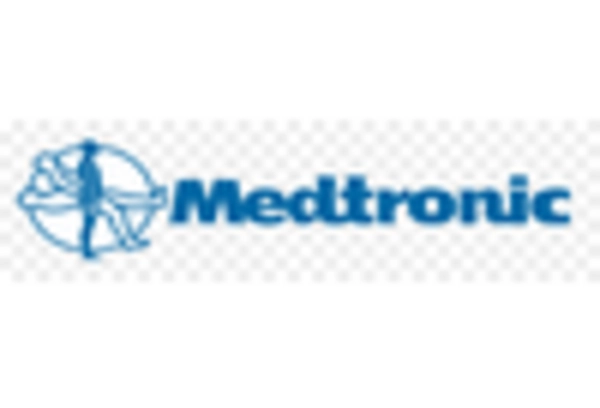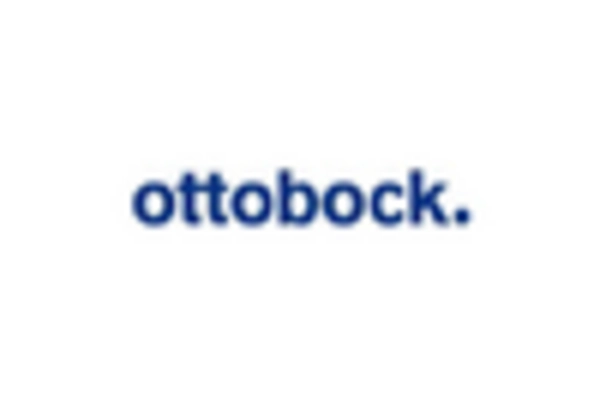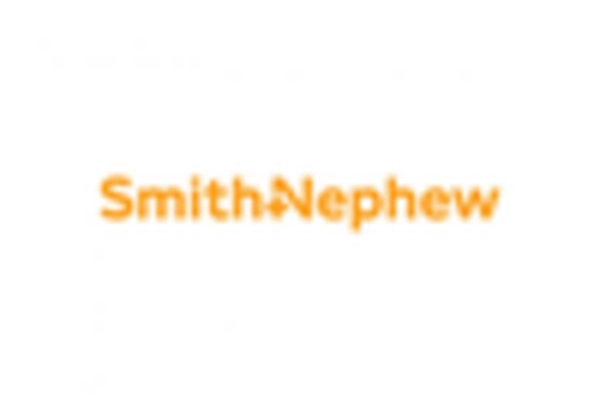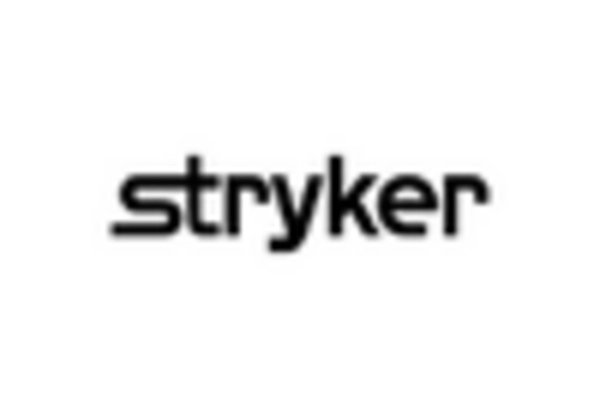Rising Incidence of Limb Loss
The Robotics Prosthetics Market is significantly influenced by the rising incidence of limb loss due to various factors, including accidents, diabetes, and vascular diseases. As the global population ages, the prevalence of conditions leading to limb amputation is expected to increase. This trend creates a growing demand for advanced prosthetic solutions that can enhance mobility and quality of life for affected individuals. Market analysis suggests that the increasing number of amputees will drive the growth of the robotics prosthetics sector, as healthcare systems seek to provide effective solutions to meet this urgent need.
Increased Focus on Rehabilitation
The Robotics Prosthetics Market is witnessing an increased focus on rehabilitation processes, which is crucial for the successful integration of prosthetic devices. Rehabilitation programs are evolving to incorporate robotic technologies that assist users in adapting to their new limbs. This shift is supported by research indicating that effective rehabilitation can significantly enhance the overall success rate of prosthetic use. As healthcare providers recognize the importance of comprehensive rehabilitation, investments in robotic-assisted therapy are likely to rise. This trend not only benefits users but also drives growth in the robotics prosthetics sector, as more individuals seek advanced rehabilitation solutions.
Government Initiatives and Funding
Government initiatives and funding play a pivotal role in the Robotics Prosthetics Market. Many governments are recognizing the importance of supporting individuals with disabilities through enhanced access to advanced prosthetic technologies. Funding programs and grants aimed at research and development in robotics prosthetics are becoming more prevalent. These initiatives not only stimulate innovation but also ensure that cutting-edge prosthetic solutions are accessible to a broader population. As public awareness of the benefits of robotics prosthetics grows, it is likely that government support will continue to expand, further propelling the market forward.
Personalization and Customization Trends
The demand for personalized and customized solutions in the Robotics Prosthetics Market is on the rise. Users increasingly seek prosthetic devices tailored to their specific needs, preferences, and lifestyles. This trend is driven by advancements in 3D printing technology, which enables the production of bespoke prosthetics at a lower cost and with shorter lead times. As a result, manufacturers are investing in customization capabilities to meet this growing demand. Market data indicates that personalized prosthetics can lead to higher user satisfaction and improved functionality, thereby fostering a more inclusive environment for individuals with limb loss.
Technological Advancements in Robotics Prosthetics
The Robotics Prosthetics Market is experiencing rapid technological advancements that are reshaping the landscape of prosthetic devices. Innovations such as artificial intelligence, machine learning, and advanced materials are enhancing the functionality and adaptability of prosthetics. For instance, the integration of AI allows for real-time adjustments based on user movements, improving user experience and comfort. The market is projected to grow significantly, with estimates suggesting a compound annual growth rate of over 10% in the coming years. These advancements not only improve the quality of life for users but also expand the potential applications of robotics prosthetics in various fields, including sports and rehabilitation.


















Leave a Comment